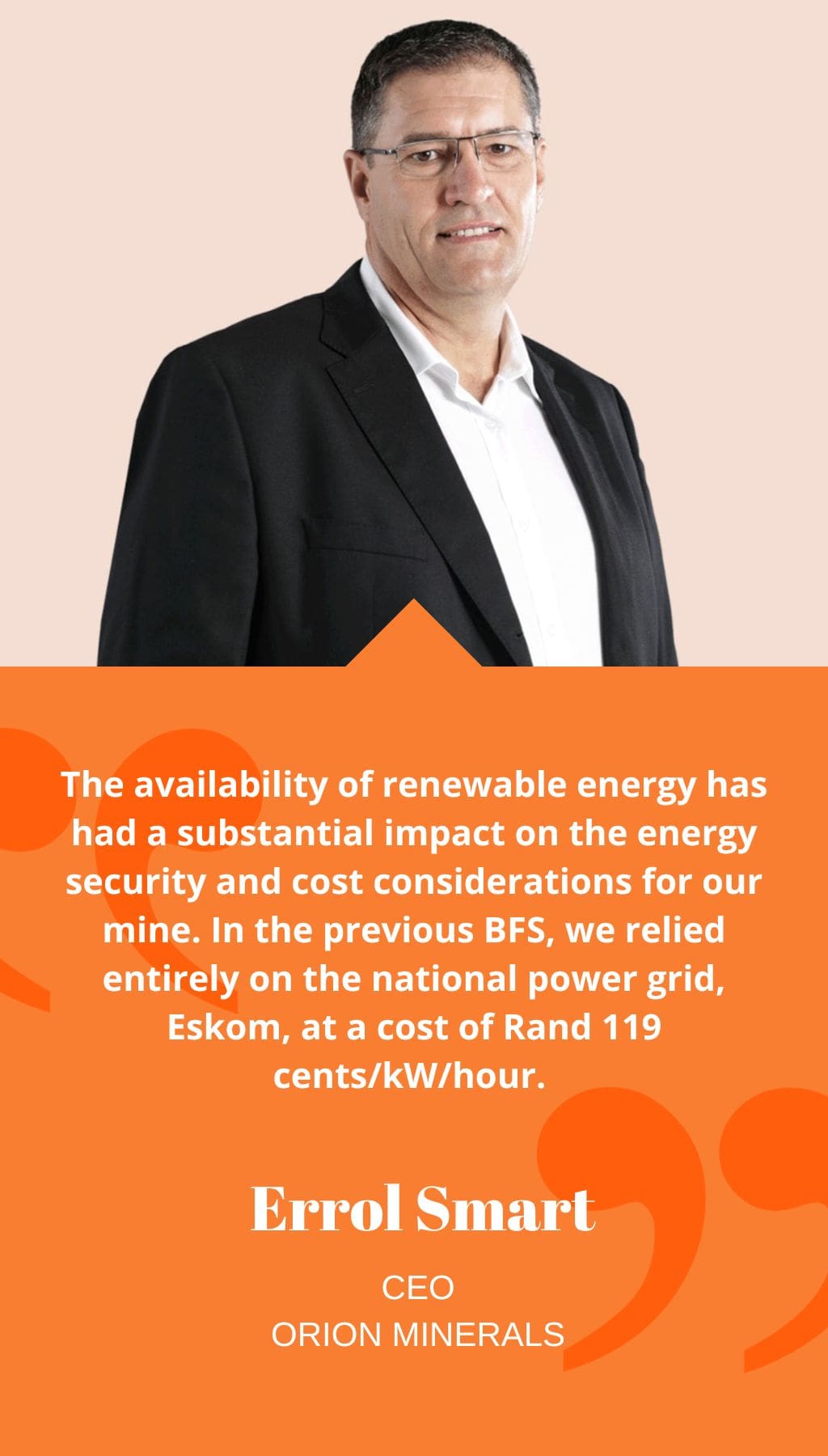
- South Africa | 18 November 2021

Why has Orion Minerals changed the development plan at its flagship Prieska copper-zinc project?
The original plan for the Prieska project was to ramp up production to 2.4 million tonnes per year (t/y) of copper ore milled. However, as market conditions evolved, we observed a growing preference among investors for lower-risk and lower-capital allocation projects with an early start and slower ramp-up. To align with these investor preferences, we modified our development profile. Instead of mining the historic Crown pillar of the mine at the end of its life, we decided to bring this forward along with select remnant pillars. This adjustment allows us to immediately start production at a rate of 1.2 million t/y while dewatering the deeper portions of the ore body. Additionally, we plan to transition from an open-pit mining approach to a shallow underground operation, using the resulting tailings to backfill the mining voids from the 1970s era.
What are the key characteristics of the Prieska ore body and its potential?
The Prieska ore body is a volcanogenic massive sulfides (VMS) deposit, which is a relatively rare type of mineralization. Similar to the Kidd Creek deposit, the largest VMS deposit globally, Prieska has significant tonnage potential. There is room for expansion along strike and at the upturned limb of the horseshoe-shaped ore body, as the mineralization remains open in those areas.
How has the updated BFS (Bankable Feasibility Study) for Prieska affected the case for energy generation?
The availability of renewable energy has had a substantial impact on the energy security and cost considerations for our mine. In the previous BFS, we relied entirely on the national power grid, Eskom, at a cost of Rand 119 cents/kW/hour. However, the cost of renewable power has significantly decreased, currently quoted at around 35-45 cents, which is almost a third of what we previously anticipated. The rapidly evolving market for renewable energy sources has created new opportunities for lower-cost and environmentally friendly financing options. This shift allows mines like Prieska, which were already on a path to carbon neutrality, to potentially become net carbon sequestrators, making them attractive to financiers seeking to offset carbon credits.
What funding options is Orion Minerals exploring for the Prieska project?
We are pursuing a combination of equity and debt financing for the Prieska project. Additionally, we have secured a significant streaming finance arrangement with Triple Flag Precious Metals. This stream finance agreement reduces our capital requirement, as we committed a portion of our gold and silver by-product for the life of the mine. Furthermore, we are exploring innovative financing options with development finance agencies, going beyond traditional commercial banks.
Could you provide an overview of your second project, the Okiep copper project?
The Okiep copper project has immense potential, but its development has been constrained in the past due to various circumstances. The mine was previously operated by Newmont and later Gold Fields, who focused on replacing reserves to maintain production between 30,000 to 50,000 tonnes per year. When Metorex acquired the mine, they opted to mine only the immediately available reserves instead of investing in extending the mine life. Okiep is located in a remote area without nearby ports or rail connections, which further impacted its operations. However, historical records indicate that Okiep still holds over 50 million tonnes of remaining ore and has identified 500 potential ore bodies. The exploration potential is significant, with mineralization visible throughout the site. Notably, the mineralization at Okiep exhibits an intrusive ultramafic style, similar to our Jacomynspan nickel-copper-cobalt-platinum project in Australia. These types of ore bodies often contain nickel and platinum group elements (PGE). We recently made a nickel discovery through drilling, and our strategy for Okiep is to establish a small mine that can generate cash at the earliest opportunity while focusing on both nickel and copper mineralization.
What opportunities do you see for tapping into higher-value markets?
At Orion Minerals, we are particularly excited about our beneficiation strategy, which involves extracting high-value metals from our projects. We envision a future where micro-powders of nickel, lithium, cobalt, copper, and other refined products play a crucial role in the high-tech industry. This shift to high-value and niche products has the potential to transform the economics of mining from bulk economies of scale to the production of highly refined and valuable products. Neglected ore bodies, previously considered sub-economic, could find new life through advanced refining technologies. Our Jacomynspan project, for instance, contains nickel, copper, cobalt, platinum group metals (PGMs), as well as waste products like iron and sulfur. Through advanced refining, these materials can become extremely valuable, opening up new opportunities. In the context of the energy transition and the need for critical metals in a low-carbon environment, geologists and explorers will need to shift their focus to different classes of minerals to meet the demands of the fourth industrial revolution and our sustainable future.














